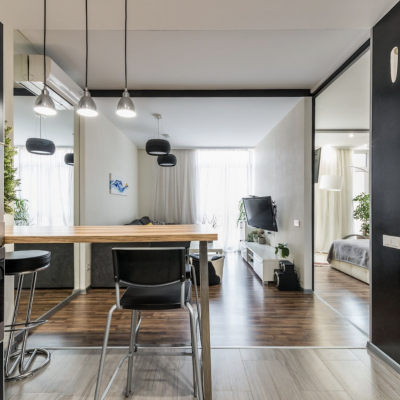A hearth structure sometimes referred to as a hearth pad is the floor surface that a stove or insert rests on. It is primarily designed to protect the surrounding area underneath your stove from burning fuel or hot embers that may damage the surface. Hearths for stoves go above and beyond just protecting your floors by also enhancing the aesthetic appeal of your surroundings, so you not only protect your floors from the harsh elements of the stove, but also add a nice touch to your overall décor.

However, before buying glass hearths or those made from any other non-combustible materials, it is important to understand the common types available, and the differences between them in order to make an investment that’s right for your space. Constructional and Superficial are the two most common types of hearths available, and the aspect that sets them apart is that the former is suited for homes where stoves generate a heat temperature of more than 100°C, and the latter is right for stoves that generate less than 100°C worth of heat.
Stoves are traditionally installed in existing fireplaces hence are set on a constructional hearth, the word “constructional” indicates that it is part of the construction or integrated with the floor of the building. When shopping for a constructional hearth, you ideally have three main types to consider:
- A minimum of 150mm (6”) of heath padding on either side of the stove
- A minimum of 300mm (12”) of hearth located at the front of the stove
- 250mm (10”) deep is the minimum required if your floor is combustible, but this number can be reduced 125mm (5”) deep in case you have an air space located at least 50mm underneath.
A 250mm constructional hearth is made from a concrete base under the floor and topped with a decorative material such as granite, sandstone, slate or other natural materials. This may seem like a big size for a hearth, but take note of the fact that some of the height and width of the hearth rests under the structure of the floor. Most modern stoves generate less than 100°C at their base, and are the only models that are compatible with 12mm hearths.
This range of hearths can be had in a choice of several different materials, but glass tops the list for its decorative as well as protective qualities. As an example, you could install a 12mm glass hearth over your existing wooden floor, and place your stove over it. Glass hearths are also a great way to indicate that there is a hearth present without sticking out like a sore thumb in areas where the entire floor is effectively the hearth.
One of the noteworthy features of the best glass hearths is that they are suited for all types of stoves, and designed to keep them clean, safe and needless to say appealing around the clock.



